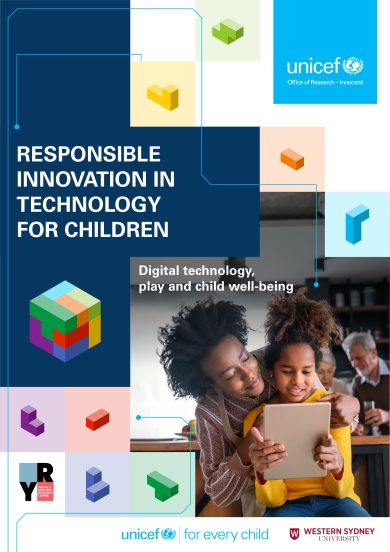About Design Well, Play Well
Design Well, Play Well is a campaign to bring together all of us interested in designing digital experiences that promote children’s well-being.
We hope that by sharing research, learnings, tools, resources, and practical approaches with each other, we can inspire and empower businesses to create better digital experiences for children.
Design Well, Play Well is built on the Responsible Innovation in Technology for Children (RITEC) initiative. The name is inspired by this comment made by a young research participant from Jordan who was taking part in a RITEC research focus group: “We enjoy meeting new friends online, especially when they play well.”
Our goal should be to design digital spaces that allow ALL children to “play well”!
About Design Well, Play Well
What is RITEC?
In 2020, The LEGO Group and UNICEF came together to ask two important questions: “What does well-being mean for children?” and “How can digital experiences be designed to enhance children’s well-being?”
To help answer these questions, they brought together leading international experts in digital design and children’s well-being to launch a new multi-year project funded by the LEGO Foundation, called RITEC – Responsible Innovation in Technology for Children.
The RITEC well-being framework reflects children’s own views on what well-being means to them. It was created through workshops with
300children from
13countries along with an analysis of existing survey data from
34,000children aged
9-17across
30countries.
The RITEC initiative is co-founded by UNICEF and the LEGO Group and funded by the LEGO Foundation.
The project is made possible with the support of the Joan Ganz Cooney Center at Sesame Workshop; the Young and Resilient Research Centre at Western Sydney University; the CREATE Lab at New York University; the Graduate Center, City University of New York; the University of Sheffield; the Australian Research Council Centre of Excellence for the Digital Child.
This website is hosted, updated and maintained by the Joan Ganz Cooney Center, which supports the RITEC initiative. Opinions expressed in this website are drawn from a wide range of organizations and actors and do not necessarily reflect those of UNICEF, the LEGO Group, the LEGO Foundation or any other RITEC partners.
Links to non-UNICEF sites do not imply endorsement by UNICEF of the accuracy of the information contained therein or of the views expressed. Questions or comments concerning information on these links should be directed to the contact person designated in the linked site.
The RITEC framework mentioned on this website is the result of research carried out by UNICEF Innocenti – Global Office of Research and Foresight and other partners.


